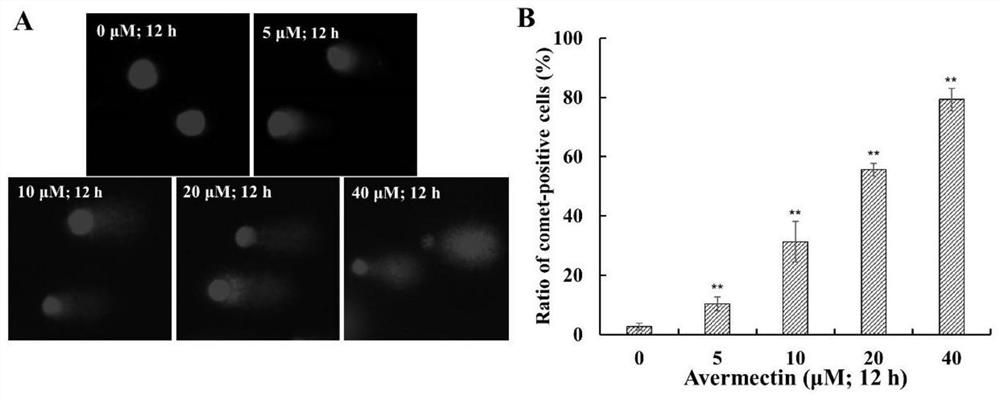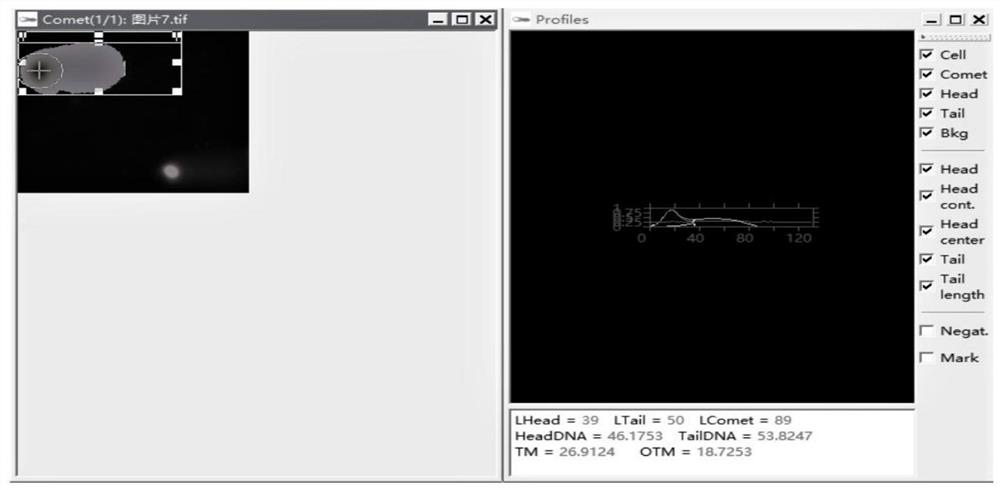Rapid detection method and kit for single cell DNA damage
A DNA damage and detection method technology, applied in measurement devices, preparation of test samples, instruments, etc., can solve the problems of easy detachment of glue and difficult solution configuration, and achieve the effect of easy degumming, flexible operation, and easier operation in detection.
- Summary
- Abstract
- Description
- Claims
- Application Information
AI Technical Summary
Problems solved by technology
Method used
Image
Examples
Embodiment 1
[0034] Example 1 Rapid Detection Method of Single Cell DNA Damage
[0035] 1. Laying glue
[0036] Preparation before gel making: Turn on the water baths at 75°C and 37°C half an hour before operation.
[0037] The first layer of glue: the first layer of glue is the bottom glue, choose a smooth glass slide, first wash all the slides, soak them in alcohol for 1 hour, and then dry them with lens cleaning paper; light an alcohol lamp, spread Bake the glass slide on the flame before gluing, add 0.1-0.3mL of agarose gel with common melting point preheated in a 75°C water bath dropwise on one end of the burnt surface, and spread the agarose gel horizontally with a triangular glass rod immediately. Glue it to the other end, and then dry it with the flame of an alcohol lamp, and set it aside.
[0038] The second layer of gel: Take 30-50 μL of cell suspension and 150-250 μL of 1% low-melting point agarose gel and blow and mix them evenly, then take 5 drops of the mixture and drop it ...
Embodiment 2
[0048] Embodiment 2 verification experiment
[0049] 1. Experimental cells
[0050] HepG2 cells were selected as the experimental subjects.
[0051] 2. Test cell preparation and damage treatment
[0052] Take the cells in the logarithmic growth phase to make cell suspension, and the cells are centrifuged to remove trypsin and medium, and then resuspended with fresh medium for use; adjust the cell density to 1×10 5 ~1×10 6 cells / ml (techniqued by a cell counter), inoculated in a 6-well cell culture plate, and after 24 hours, the cells were detected by light microscopy to confirm that the cells adhered to the wall and grew normally, and the medium in the well was discarded, and the drug-infected cells were prepared and continued to culture .
[0053] After diluting the mother solution of the drug into the corresponding concentration (5μM, 10μM, 20μM, 40μM) of the test drug solution with HepG2 cell culture medium, add 2ml of the test drug solution to each well of the prepared...
PUM
 Login to View More
Login to View More Abstract
Description
Claims
Application Information
 Login to View More
Login to View More - Generate Ideas
- Intellectual Property
- Life Sciences
- Materials
- Tech Scout
- Unparalleled Data Quality
- Higher Quality Content
- 60% Fewer Hallucinations
Browse by: Latest US Patents, China's latest patents, Technical Efficacy Thesaurus, Application Domain, Technology Topic, Popular Technical Reports.
© 2025 PatSnap. All rights reserved.Legal|Privacy policy|Modern Slavery Act Transparency Statement|Sitemap|About US| Contact US: help@patsnap.com


